Clancy Tucker's Blog, page 214
August 5, 2016
6 August 2016 - VINCENT van GOGH
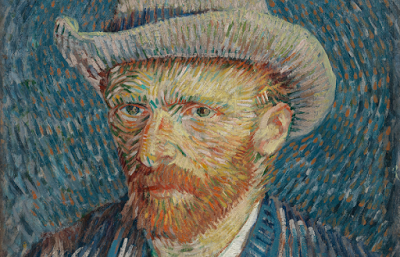
VINCENT van GOGH
G'day folks,
Here is a name you will know. He is one of the most famous and influential artists of all time, but Vincent van Goghstruggled in obscurity during his brief life. Born in the village of Groot-Zundert, Holland on March 30, 1853, van Gogh was born into a religious, upper middle class family and after much traveling and various unfulfilling occupations, he took up painting with almost no formal training.
His tremendous oeuvre of landscapes, still-lifes, portraits and sketches with their vibrant colors and subjective perspective would revolutionize how the world viewed art. He fought depression and mental illness while creating an intense and arresting universe of images.
Popular retellings of his tragic story include Vincente Minnelli’s Hollywood biopic Lust for Life (1956) with Kirk Douglas and Robert Altman’s quirky Vincent and Theo(1990) starring Tim Roth. His life also inspired Don McLean’s 1971 hit song “Vincent” and an animated feature is due out this year. But no film or song can completely capture the tumultuous journey of this conflicted soul.

1. His Happiest Year Was in London
In 1873, Vincent traveled to the British capital to work for the art dealer Goupil and Cie. He was previously employed by them in The Hague. This was the happiest time in his life. He was earning a considerable salary (more than his father) and he fell in love with his landlady’s daughter Eugenie Loyer. But she rebuffed his romantic advances when he declared them to her, saying that she was secretly engaged to a former boarder. In Nicholas Wright’s largely fictional play Vincent in Brixton, the playwright imagines that the future artist had an affair with the landlady, a widow of 15 years, rather than her daughter. His time in London did not end happily as he became more isolated. He transferred to Paris where he grew angry at his bosses for treating art as a commodity and was fired in 1876.

2. In Less Than 10 Years, He Painted Almost 900 Paintings
From November 1881 to July 1890, van Gogh produced close to 900 paintings. At the age of 27, he abandoned his unsuccessful careers as an art dealer and a missionary and concentrated on his painting and drawing. When he began painting he used peasants and farmers as models and then flowers, landscapes and himself because he was too poor to pay his subjects.
3. A Prolific Correspondent He wrote nearly as many letters as he created paintings. Van Gogh composed nearly 800 letters in his lifetime, mainly to his brother and closest friend Theo.
4. Only One Painting Sold During His Lifetime
Van Gogh was never famous as a painter during his lifetime and constantly struggled with poverty. He sold only one painting while he was alive: The Red Vineyardwhich went for 400 francs in Belgium seven months before his death. His most expensive painting Portrait of Dr. Gachet was sold for $148.6 million in 1990.

5. Only the Lobe, Not the Whole Ear Was Cut Off
It’s popularly believed that van Gogh cut off his ear but he actually only severed a part of the ear lobe. The accepted version is that the artist mutilated himself with a razor after an argument with his friend Paul Gauguin in Arles where they were both staying during Christmas of 1888. He then ran to a bordello and presented the cut lobe to a prostitute. A new book by two German historians purports that what really happened is that Gauguin lopped off his friend’s lobe while they were fencing and the self-mutilation was concocted between the two to avoid embarrassment and arrest. Van Gogh immortalized his wound in his Self-Portrait with Bandaged Ear.
6. His Most Famous Work Was Done in an Asylum Starry Night, arguably his most famous work, was painted in an asylum at Saint-Remy-de-Provence, France. He voluntarily admitted himself there to recover from his 1888 nervous breakdown which resulted in the ear-cutting incident. The painting depicts the view from his bedroom window. It has been part of the Metropolitan Museum of Art’s permanent collection since 1941.
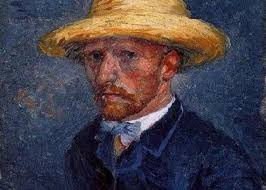
7. He Died at 37 On July 27, 1890, van Gogh shot himself in the chest. There were no witnesses and the gun was never found. He committed the act either in the wheat field he had been painting or in a barn. He was able to stagger to the auberge in Auvers where he was staying. Two doctors tended to him, but the bullet could not be removed because there was no surgeon available. He died on July 29, 1890 from an infection in the wound. His brother Theo later wrote to their sister Elizabeth,
“In the last letter which he wrote me and which dates from some four days before his death, it says, ‘I try to do as well as certain painters whom I have greatly loved and admired.’ People should realize that he was a great artist, something which often coincides with being a great human being. In the course of time this will surely be acknowledged, and many will regret his early death.” Theo, who had been supporting his brother, died six month later. Theo’s wife dedicated herself to collecting her late brother-in-law’s work and thanks to her diligence, it began to receive recognition 11 years later.

Clancy's comment: I'm certainly no art critic, and just as well. A sad life, eh?
I'm ...


Published on August 05, 2016 15:23
August 4, 2016
5 August 2016 - AMERICAN 'DOUGHBOYS'

AMERICAN 'DOUGHBOYS'
G'day folks,
Ever heard of these? Doughboy was an informal term for a member of the United States Army or Marine Corps, especially used to refer to members of the American Expeditionary Forces in World War I, but initially used in the Mexican-American War of 1846-48.
It’s unknown exactly how U.S. service members in World War I (1914-18) came to be dubbed doughboys—the term most typically was used to refer to troops deployed to Europe as part of the American Expeditionary Forces—but there are a variety of theories about the origins of the nickname. According to one explanation, the term dates back to the Mexican War of 1846-48, when American infantrymen made long treks over dusty terrain, giving them the appearance of being covered in flour, or dough.

As a variation of this account goes, the men were coated in the dust of adobe soil and as a result were called “adobes,” which morphed into “dobies” and, eventually, “doughboys.” Among other theories, according to “War Slang” by Paul Dickson the American journalist and lexicographer H.L. Mencken claimed the nickname could be traced to Continental Army soldiers who kept the piping on their uniforms white through the application of clay. When the troops got rained on the clay on their uniforms turned into “doughy blobs,” supposedly leading to the doughboy moniker.
However doughboy came into being, it was just one of the nicknames given to those who fought in the Great War. For example, “poilu” (“hairy one”) was a term for a French soldier, as a number of them had beards or mustaches, while a popular slang term for a British soldier was “Tommy,” an abbreviation of Tommy Atkins, a generic name (along the lines of John Doe) used on government forms.

America’s last World War I doughboy, Frank Buckles, died in 2011 in West Virginia at age 110.Buckles enlisted in the Army at age 16 in August 1917, four months after the U.S. entered the conflict, and drove military vehicles in France. One of 4.7 million Americans who served in the war. Buckles was buried at Arlington National Cemetery.

Clancy's comment: There ya go. I'd never heard of them before. Frank Buckles died at 110. Wow!
I'm ...


Published on August 04, 2016 14:55
August 3, 2016
4 August 2016 - HENRY LAWSON
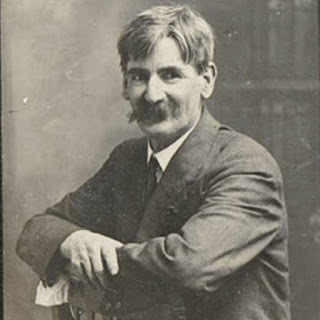
HENRY LAWSON
G'day folks,
I'm happy to introduce another of my all-time favourite authors and poets. Henry Archibald Hertzberg Lawson was an Australian writer and poet. Along with his contemporary, Banjo Paterson, Lawson is among the best-known Australian poets and fiction writers of the colonial period.
Synopsis Henry Lawson was born on June 17, 1867, in Grenfell, Australia. He wrote short stories and ballad-like poems, illuminating the lives of rural, working Australians. Lawson is often called "Australia's greatest writer." During the colonial period, he traveled extensively, and was frequently published in the Bulletin. He died impoverished in 1922.
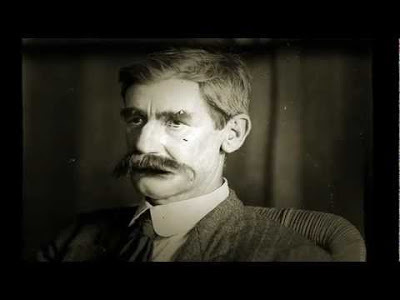
After his mother helped establish a school in their area, when Lawson was around the age of 8 or 9, he began his education. He experienced a personal setback, however, after an illness left him partly deaf. Lawson only had a few years of schooling, leaving him sensitive about his educational background for the rest of his life.
Lawson joined his mother in Sydney after she separated from his father. There, he published his first poem in 1887. Inspired by the riots against the monarchy during Queen Victoria's jubilee, Lawson wrote "A Song of the Republic," which appeared in the Bulletin. Lawson soon wrote poems and stories for other publications as well, including "Andy's Gone with Cattle," and even became a journalist for a short time with the Brisbane Boomerang.
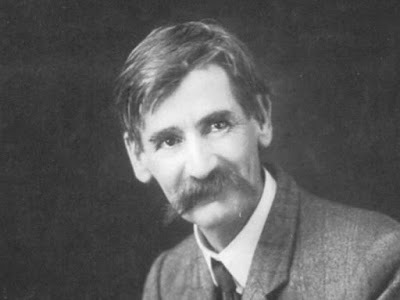
Lawson landed a book contract with Angus and Robertson. Through them, he published the poetry volume In the Days When the World Was Wide and the popular short story collection While the Billy Boils—both in 1896. Around this same time, Lawson met his future wife, Bertha Marie Louise Bredt. The pair wed in 1896 and eventually had two children together, son Joseph and daughter Bertha.
In 1900, Lawson went to London, England, with his family, hoping to become a literary sensation, but the trip proved to be a personal and professional disappointment. Lawson did, however, manage to write four stories featuring Joe Wilson during this time—considered to be among his best works of fiction.

Final Years
In 1902, Lawson moved back to Sydney with his family. He was so despondent that he attempted suicide that December. The following year, his wife officially separated from him. Lawson spent his later life struggling with mental health issues and alcohol. He ended up in jail on occasion for public drunkenness and for failing to pay support for his children.
Lawson died of a cerebral hemorrhage on September 2, 1922, in Abbotsford, Australia. After his death, Lawson was heralded as one of the country's leading literary figures. He was even given a state funeral, which was attended by a number of prominent officials.

Clancy's comment: A very gifted man. I've read all of his works many times. Love ya work, Henry!
I'm ...


Published on August 03, 2016 16:00
August 2, 2016
3 August 2016 - FACTS ABOUT MARTHA WASHINGTON
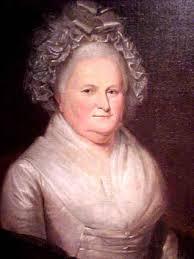
FACTS ABOUTMARTHA WASHINGTON
G'day folks,
Martha Washington was the wife of George Washington, the first president of the United States. Although the title was not coined until after her death, Martha Washington is considered to be the first First Lady of the United States.
There's a lot more to Martha Washingtonthan most people know, from the fact that she bravely faced danger during the Revolutionary War to her ability to hold a big grudge. In honor of Martha's 285th birthday, here are seven fascinating facts about one of the America's Founding Mothers.
When George Met Martha
Following the death of her first husband, Martha Dandridge Custis was one of the most eligible women in Virginia: young, pretty and very wealthy. It was at this moment that she met George Washington. George had a lot going for him — he was an attractive man with a plantation who had done well during his military service — but he hadn't yet achieved the level of acclaim that would come as a Founding Father.
et Martha didn't care whether or not George's status matched hers. After their initial meeting in March 1758, she quickly invited him to visit her again. She had another, wealthier suitor, and given her position wouldn't have had to wait long for more choices, but she liked George. The pair wed on January 6, 1759. It turned out to be a wise decision on both of their parts, as the Washingtons would share a long and happy marriage.

Kidnapping Danger
After George became head of the Continental Army during the American Revolution, he had concerns that his position might turn Martha into a kidnapping target: a British ship could sail up the Potomac River at night to grab his wife from Mount Vernon. And he wasn't alone in these thoughts — George's cousin wrote him a letter that noted, "’Tis true many people have made a Stir about Mrs Washingtons [sic] Continuing at Mt Vernon."
However, Martha didn't fall prey to the fears that were worrying her husband and others. After all, she knew that she could ride away to escape the British should they get close. Though she would leave Mount Vernon at times in order to live with George in military camps, Martha refused to be chased out of her home because she was scared of the enemy.
Esteemed as "Lady Washington"
George leading the Continental Army brought him into a position of prominence; as his wife, Martha also became an admired public figure. After visiting Philadelphia in November 1775 (a stop on her way to reunite with George at a military camp), she wrote, "I left it in as great pomp as if I had been a very great somebody."
Martha, who was hailed by many as "Lady Washington," even had a row galley, part of a small Continental fleet, named the Lady Washington in her honor. And when Esther Reed decided to raise money for soldiers, she wanted Martha to be the one to distribute the funds (though George had to step in as his wife was away). Martha would remain in high esteem for the next century, with her image printed on silver dollar certificates in 1886, 1891 and 1896 (making her the last woman to appear on paper currency in the United States — at least until Harriet Tubmanshows up on the $20 bill).

Smallpox Inoculation
In the 18th century, there was a way for people to protect themselves from smallpox: inoculation, which meant getting exposed to the disease in the hopes of contracting a mild case that would provide future immunity. But there was no guarantee the initial illness would be mild; wary of the risks, Martha had made it to her 40s without undergoing the procedure. However, given the danger of smallpox, Martha needed protection if she wanted to stay with George during the Revolutionary War.
George felt Martha's fears would prevent her from going through with inoculation, but he was wrong: On May 23, 1776, Martha was exposed to smallpox by a doctor in Philadelphia. The treatment went well, leaving her both immune and unscarred. It also helped the American Revolution, as her husband now had access to unimpeded support from Martha. As her son wrote to George, "She can now attend you to any Part of the Continent with pleasure, unsullied by the Apprehensions of that Disorder.…Your happiness when together will be much greater than when you are apart."
First Lady Problems After the Revolutionary War, Martha wanted to remain at Mount Vernon, and was disappointed when George became president in 1789. Yet it wasn't until she arrived in New York City, the nation's temporary capital, that she discovered how circumscribed her life as the president's wife was going to be.
As advised by Alexander Hamiltonand John Adams, George had agreed that the couple would refrain from accepting private invitations. This was done so the president wouldn't be seen as showing favor to certain citizens over others, but the decision cut Martha off from the escape valve of seeing her friends. In the fall of 1789, when George was away, she wrote, "I lead a very dull life here and know nothing that passes in the town. I never go to any publick [sic] place,—indeed I think I am more like a state prisoner than anything else, there is certain bounds set for me which I must not depart from."
When the Washingtons relocated to Philadelphia (the temporary capital from 1790 to 1800), Martha got George to okay private invites, and was able to enjoy herself at teas and dinners once more. This was lucky for presidential successors as well — if the precedent of eschewing a social life had taken hold, many might have balked at stepping into the roles of president and presidential spouse.
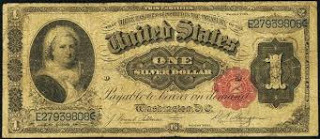
The Freedom of Ona Judge
Martha could be a very generous woman — she took excellent care of George and her family, and spent hours during the Revolutionary War knitting socks for troops. But when it came to slavery, she held the horrifying (yet all too common for the time) view that owning people was an acceptable part of life. So when Ona Judge, an enslaved woman who served as Martha's maid, managed to escape in Philadelphia in 1796, Martha's first thought was to get her back.
Judge ended up in Portsmouth, New Hampshire. When the Washingtons discovered this, George wrote to his Treasury secretary to ask for help with recapturing Judge; his missive mentioned, "Mrs Washington's desire to recover her." Judge, who wouldn't return willingly, was able to stay in New Hampshire, but the Washingtons still didn't give up — in 1799, George asked a nephew to get Judge in a letter that noted, "it would be a pleasing circumstance to your Aunt."
Fortunately, Judge learned of the planned kidnapping in time to escape. George died later that year, and Judge was able to live the rest of her life as a free woman (albeit under the specter of the Fugitive Slave Act, which made it legal for her to be captured at any time). When asked later if she had regrets about leaving her relatively comfortable position as Martha's maid, Judge said, "No, I am free, and have, I trust, been made a child of God by the means."

The Two Worst Days of Martha's Life
After George died on December 14, 1799, Martha was so devastated that she couldn't bring herself to step outside for the funeral. The day she lost her husband was, understandably, the saddest of her life. However, what she considered the second most painful day she had to endure is a little more surprising: it was Thomas Jefferson's visit to Mount Vernon in 1801.
This was a terrible event because Martha disliked and disdained Jefferson, sentiments she harbored due to his involvement with political attacks on her beloved husband. As Martha later revealed to a clergyman, she considered Jefferson "one of the most detestable of mankind" and his election to the presidency "the greatest misfortune our country has ever experienced." Basically, if you messed with George, Martha didn't forgive or forget.

Clancy's comment: I reckon she would have been a tough lady to deal with.
I'm ...


Published on August 02, 2016 14:35
August 1, 2016
2 August 2016 - MUHAMMAD ALI

MUHAMMAD ALI
G'day folks,
Like him or not, he was a personality. From his birth as Cassius Marcellus Clay Jr. in the segregated South on January 17, 1942, to his death on June 3, 2016, boxing legend Muhammad Ali spent his whole life fighting. And whether against his opponents in the ring, racial and religious prejudice, or the United States government, to name just a few, he usually won.
His record of 56–5 is among boxing’s best, and his witticisms are without a doubt its greatest. Muhammad Ali’s passing leaves a void in the sports world that will perhaps never be filled, and a legacy that transcends it, having made an indelible mark on history, social justice, politics, religion and popular culture.
Clay’s first steps on the road to sports immortality were taken when, in 1954 at the age of 12, he was overheard by Louisville police officer Joe E. Martin saying that he wanted to beat up a thief who had stolen his bicycle. Martin suggested that Clay would need to learn how to box first and offered to train him. Over the next six years, Martin’s admiration of the young fighter’s skill, determination and work ethic would grow, and so would Clay’s collection of amateur titles as he boxed his way to the 1960 Olympics in Rome.
Returning home from the games with the gold medal, Clay was greeted with much fanfare, but he also encountered the racial prejudice with which he was all too familiar when he was denied service in a Kentucky restaurant. The contrast was not lost on Clay and would only serve to deepen the ideas and feelings that would later influence some of the most pivotal decisions of his life.
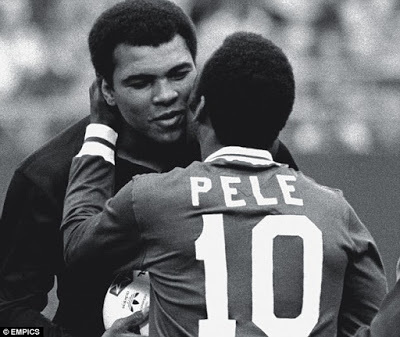
But Clay was on the rise. In October 1960, he won his first professional fight, and by 1964 had carried an impressive 19–0 record (15 by way of knockout)—and a reputation for brashness and agility both in and out of the ring—through the heavyweight circuit and all the way to the title, which on February 25, at age 22, he won from Sonny Liston in a six-round decision by technical knockout. After the fight, Ali declared, “I’m the greatest! I shook up the world!” He shook it even more the following day when he announced his own conversion to Islam, and again a month later when he told the press that he had chosen a new name—Muhammad Ali—to replace his “slave name.”
Ali would spend the next few years boldly defending both his boxing title and his beliefs, facing perhaps his greatest challenge to date when in 1966 he was drafted into the U.S. Army. Ali responded by declaring himself a conscientious objector, saying famously “I ain’t got not quarrel with them Vietcong,” and when his name was called at his induction ceremony, he refused to step forward and was promptly arrested. Essentially banned from fighting in the United States, for the remainder of the year, Ali continued to fight abroad, but in 1967 his passport was revoked and he was stripped of both his title (which was given to Joe Frazier) and his boxing license.
Exiled from boxing, Ali supported himself by doing the other thing he did best—talking. At a time when opposition to the Vietnam War was growing, Ali’s opinions on the subject and his refusal to serve in the military made him popular in the counterculture movement and he was able to support himself through a speaking tour of colleges and universities around the country.
In 1971, the Supreme Court finally reversed Ali’s conviction and his boxing license was reinstated.

Over the next few years Ali would have some of the greatest fights of his career, and arguably the most famous in the history of the sport. On March 8, 1971, Ali stepped into the ring at Madison Square Gardens for the “Fight of the Century” against Joe Frazier. Ali lost the fight in a 15-round decision (his first professional loss), but after defeating 12 of his next 13 opponents, he and Frazier met again, and this time Ali won, earning himself a chance to regain the title, then held by George Foreman. That fight, called "The Rumble in the Jungle,” was held in Kinshasa, Zaire, in 1974. Ali emerged victorious after knocking out Foreman, whom he had worn out in the African heat with his “rope-a-dope” strategy, to become, once more, the heavyweight champion of the world.
In 1975, Ali again faced and defeated Frazier, in the “Thrilla in Manilla,” but after several more victories, in February 1978 Muhammad Ali lost his title to Leon Spinks. Seven months later Ali defeated Spinks to regain the title for a record-setting third time, but after he lost it to Larry Holmes in 1980 and was defeated by Trevor Berbick in 1981, he finally decided, at age 39, to hang up his gloves.
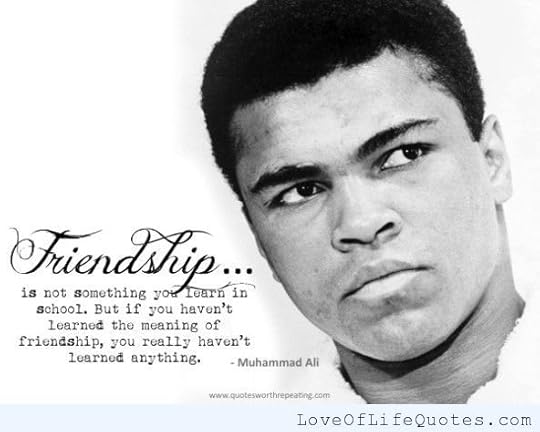
In 1984, Muhammad Ali was diagnosed with Parkinson’s disease, a neurological condition that over the years would slow the fleet-footed fighter considerably and cause his once-powerful hands to weaken and shake. Yet even as Ali’s condition worsened, what it could never seem to dampen was his fighting spirit, his convictions or his wit. Despite his illness, for the remainder of his life, Ali tirelessly devoted himself to charitable endeavors, including the Special Olympics and the Make-a-Wish Foundation, as well as the Muhammad Ali Parkinson Research Center.
He also made numerous goodwill missions to African countries and, never one to shy from controversy, even pariah nations such as North Korea, Cuba and Iraq. He received countless awards for his work beyond the ring, and earned numerous honors for his achievements inside of it, including, surely, the title that he gave himself—“The Greatest.”
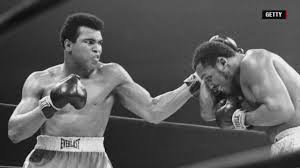
After his long battle with Parkinson's disease, the boxing great died on June 3, 2016 in Phoenix, after being treated for respiratory complications.
Muhammad Ali once asked the question, “Will they ever have another fighter who writes poems, predicts rounds, beats everybody, makes people laugh, makes people cry and is as tall and extra pretty as me?” In the days and decades to come, as the world looks back and takes measure of his impact, the answer to that question will almost certainly be a unanimous “No.”

Clancy's comment: Did you ever see this guy interviewed by Michael Parkinson? Well, have a look at it. Ali has a great sense of humour.
I'm ...



R.I. P
Published on August 01, 2016 15:07
July 31, 2016
1 August 2016 - VERY MOVING PICTURES

VERY MOVING PICTURES
G'day folks,
Check out these cracker photographs.















Clancy's comment: Absolutely love them. Hope you do too.
I'm ...


Published on July 31, 2016 15:29
July 30, 2016
31 July 2016 - INTERESTING QUOTES

INTERESTINGQUOTES
G'day folks,
Yep, it's time to do some serious thinking. Time for some quotes.
















Clancy's comment: There ya go, folks. There are some goodies here. Just have to remember them.
I'm ....


Published on July 30, 2016 15:22
July 29, 2016
30 July 2016 - KIDS FROM MEXICO

KIDS FROM MEXICO
G'day folks,
Here is Mexico as part of my series on kids around the world.

Continent: North America Climate: tropical on the coasts; temperate mountain areas and deserts inlandSchool: Large schools hold two shifts—one group of children attends in the morning, and one attends in the afternoon. Uniforms are usually required.The school year typically runs from the beginning of September through the end of June.Play: Lotería, a game similar to bingo, is played with picture cards and song. Jump rope and other outdoor games are very popular.Soccer is the top sport in Mexico. Other favorites include baseball and jai alai, a handball game that originated in Spain.Family: Many homes in Mexico include not just parents and children but grandparents, aunts, uncles, cousins or other family members.Children have two last names. Their father's last name is the first part, and their mother's last name is the second part.Signature foods: Mole, a sauce that is made with up to two dozen ingredients; it typically includes peppers, spices such as cinnamon and chocolateTamal (plural tamales), corn dough stuffed with meat, cheese or a sweet filling, then wrapped in a corn husk and steamed Interesting animals: The San Quintin kangaroo rat, whose powerful back legs can send it more than 7 feet in a single hopThe slow-moving vaquita, the world's smallest cetacean (animal in the porpoise family), weighing only about 100 poundsUnique holiday: Guelaguetza, in the state of Oaxaca, a fiesta that dates to pre-Columbian times; the summer celebration includes parades, dancing and monigotes (giant puppets).

Did you know? In Mexico today, Spanish is the official language, but more than 60 native languages are spoken. The top native languages are Náhuatl (about 2.5 million speakers) and Maya (about 1.5 million speakers).



Clancy's comment: Great place, wonderful people, gorgeous kids, and a sensational destination for a photographer.
I'm ...


Published on July 29, 2016 15:02
July 28, 2016
29 July 2016 - MAHATMA GANDHI WISDOM
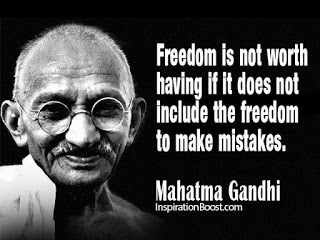
MAHATMA GANDHI WISDOM
G'day folks,
Welcome to some wisdom from another famous man. Mohandas Karamchand Gandhi was the pre-eminent leader of the Indian independence movement in British-ruled India.


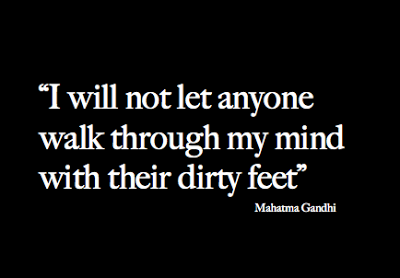






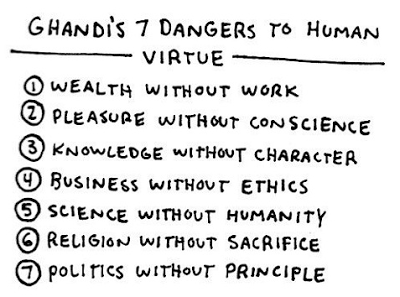


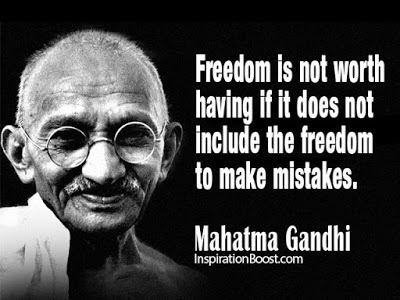

Clancy's comment: Another interesting man with a mountain of wisdom.
I'm ...


Published on July 28, 2016 14:34
July 27, 2016
28 July 2016 - THE SWORD OF DAMOCLES

THE SWORD OF DAMOCLES
G'day folks,
Damocles is a figure featured in a single moral anecdote commonly referred to as "the Sword of Damocles", an allusion to the imminent and ever-present peril faced by those in positions of power.
The famed “sword of Damocles” dates back to an ancient moral parable popularized by the Roman philosopher Cicero in his 45 B.C. book “Tusculan Disputations.” Cicero’s version of the tale centers on Dionysius II, a tyrannical king who once ruled over the Sicilian city of Syracuse during the fourth and fifth centuries B.C. Though rich and powerful, Dionysius was supremely unhappy. His iron-fisted rule had made him many enemies, and he was tormented by fears of assassination—so much so that he slept in a bedchamber surrounded by a moat and only trusted his daughters to shave his beard with a razor.
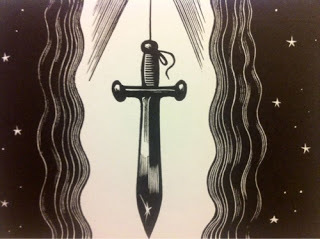
As Cicero tells it, the king’s dissatisfaction came to a head one day after a court flatterer named Damocles showered him with compliments and remarked how blissful his life must be. “Since this life delights you,” an annoyed Dionysius replied, “do you wish to taste it yourself and make a trial of my good fortune?” When Damocles agreed, Dionysius seated him on a golden couch and ordered a host of servants wait on him. He was treated to succulent cuts of meat and lavished with scented perfumes and ointments.
Damocles couldn’t believe his luck, but just as he was starting to enjoy the life of a king, he noticed that Dionysius had also hung a razor-sharp sword from the ceiling. It was positioned over Damocles’ head, suspended only by a single strand of horsehair. From then on, the courtier’s fear for his life made it impossible for him to savor the opulence of the feast or enjoy the servants. After casting several nervous glances at the blade dangling above him, he asked to be excused, saying he no longer wished to be so fortunate.
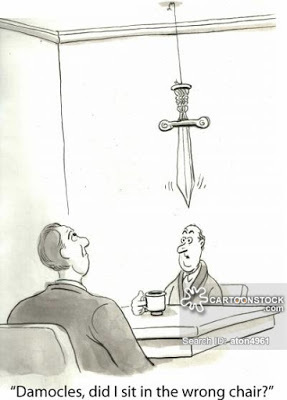
For Cicero, the tale of Dionysius and Damocles represented the idea that those in power always labor under the specter of anxiety and death, and that “there can be no happiness for one who is under constant apprehensions.” The parable later became a common motif in medieval literature, and the phrase “sword of Damocles” is now commonly used as a catchall term to describe a looming danger. Likewise, the saying “hanging by a thread” has become shorthand for a fraught or precarious situation.
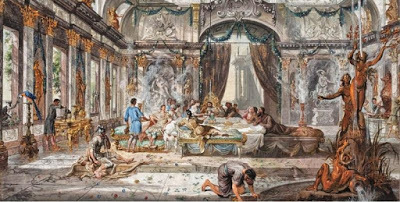
One of its more famous uses came in 1961 during the Cold War, when President John F. Kennedy gave a speech before the United Nations in which he said that “Every man, woman and child lives under a nuclear sword of Damocles, hanging by the slenderest of threads, capable of being cut at any moment by accident or miscalculation or by madness.”

Clancy's comment: Mm ... I seriously doubt if many Aussie politicians even give the sword a thought. Sadly!
I'm ...


Published on July 27, 2016 14:29



